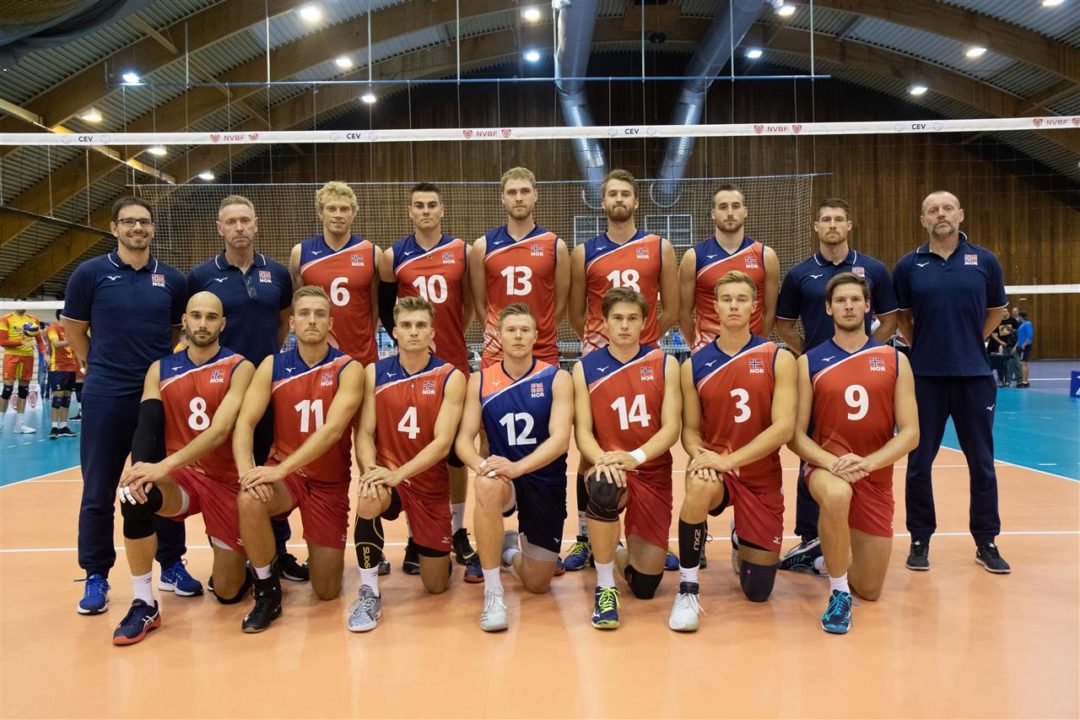The Norwegian Men’s Senior National team recently completed the first stage of qualifiers for the 2019 European Championship with a record of 2-2, highlighted by wins over Spain and Georgia. With a young team, the coaching staff had been experimenting with lineups over the course of the qualifying match schedule. Most notably, the Norwegian team intentionally trained and implemented a 6-2 offensive system for half of the qualifying matches.
The use of the 6-2 system is incredibly rare at the Senior level. In fact, Norway is the only such team to implement its usage during the rally scoring era. In a 6-2 offense, named for its use of two setters and six attackers, two different setters set exclusively when they are in the back row then are replaced by an opposite hitter or attack as opposite hitters in the front row. There are vocal supporters of both the 6-2 and 5-1 systems, in which only one setter is used, though the largest advantage of using a 6-2 is the ability to maintain three separate attackers in the front row at all times.
However, substitution limitations at the international level make the ability to use a 6-2 offense incredibly unlikely, if not impossible. Per FIVB rules, only six substitutions are allowed per set. While players are allowed to substitute out of the match, they may only do so once per set. Players may only substitute back into the match once per set as well. The same reasoning explains why the 6-2 is more common in women’s NCAA volleyball than men’s – in women’s NCAA volleyball, each team is given 15 substitutions-per-set, whereas men’s teams only receive 6 substitutions-per-set.
With the usage of rally scoring, relying on the ability to make multiple substitutions per set is not only highly unlikely but potentially illegal. As a result, few teams have the ability to run the 6-2 as it requires both of their setters to be able to set out of the back row and attack out of the front row. Most setters are not capable of doing so effectively enough to warrant the usage of a 6-2, and the use of a single setter combined with a high-powered opposite is used instead.
Norway’s incredibly flexible personnel allowed them to do what no other team has to date: run a 6-2 offense at the Senior level. Their two setters, Jonas Kvalen and Jakob Theile, alternated setting and attacking depending on their position on the court. It was an interesting combination in itself: the team captain and most experienced player Kvalen sharing setting responsibilities with the 18-year-old Theile.
The 6-2 was scrapped after the first match with Belarus, with Kvalen moving to full-time Opposite and Henrik Aase Hole taking over setting responsibilities. However, Hole suffered an injury which resulted in a reversion to the 6-2 system for the Georgia match and first Spain match of the qualifiers. The 5-1 system with Hole as the primary setter was again used for the second match against Spain, which resulted in Norway’s first-ever win over a Spanish team.
The Norwegian team as a whole is no stranger to playing out of position: Kvalen will be playing as an outside hitter for his club team, Lasuanne UC. Kristian Bjelland played middle despite playing as an outside for his club team, and Lars Fredrik Tvinde competed as a libero despite playing as an outside for the majority of his career. Bjarne Nikolai Hous also played as a receiver despite traditionally competing as a libero. Norway’s incredible flexibility can only be seen as a strength moving forward into their January matches with Belarus and Georgia, in which they will attempt to clinch a spot in the Final Round.

What about the Cuban women? You can’t write a piece about the 6-2 offense without mentioning that team. They ran a true 6-2 with great success for decades: Three consecutive gold medals, one of which was in the rally scoring era, as well as a bronze medal in 2004 and strong results in the 2008 quad. Not to mention all of the other international competitions in which they had great results.